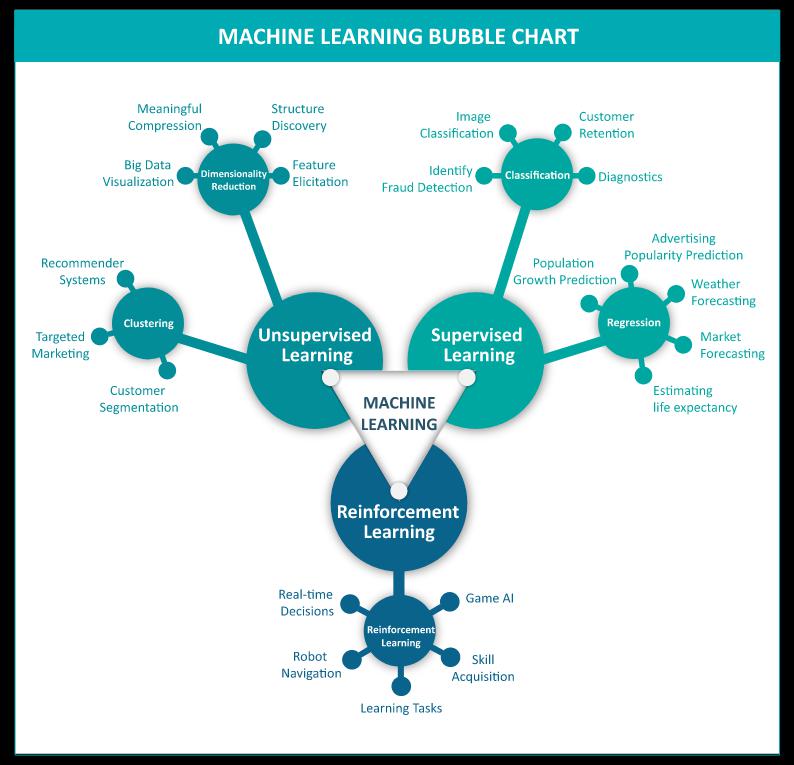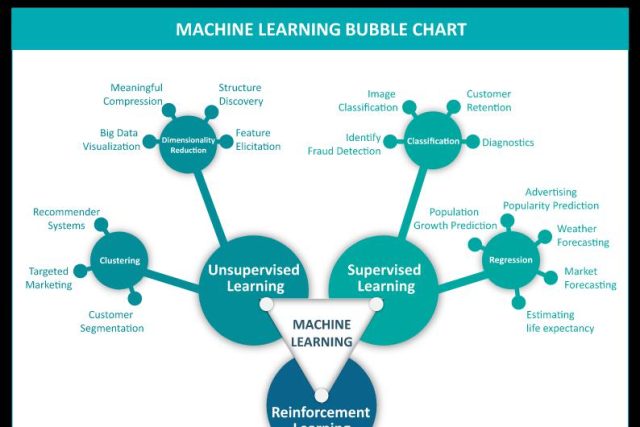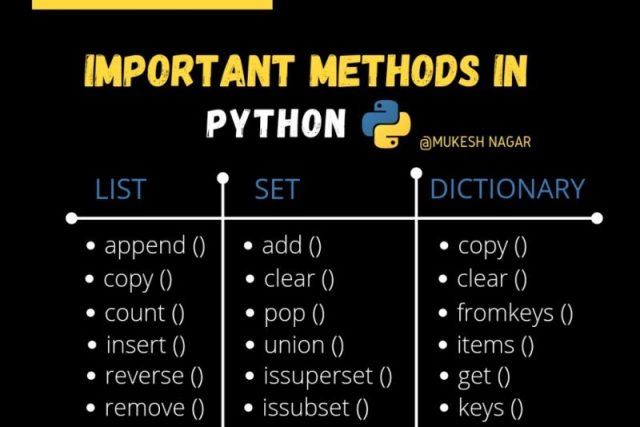There are three main types of Machine Learning – Supervised, Unsupervised, and Reinforcement Learning.
Unsupervised Learning
Unsupervised Learning is the training of a machine learning algorithm using data that is not labeled, allowing the algorithm to look for patterns in a dataset with no labels and with minimal human supervision. This is in contrast to supervised learning techniques, where a model is given a training set of inputs and a set of observations, and must learn a mapping from the inputs to the observations. In unsupervised learning, only the inputs are available, and a model must look for interesting patterns in the data.
Another term for unsupervised learning is knowledge discovery. Common unsupervised learning techniques include clustering, and dimensionality reduction.
Example of Unsupervised Learning Techniques
Cluster analysis:
Clustering is the task of grouping a set of items so that each item is assigned to the same group as other items that are similar to it. Clustering is commonly used for data mining.
Common algorithms include K-Means clustering, Hierarchical clustering, and Mixture models.

Clustering is the process of using algorithms to identify how different types of data are related.
Supervised learning
In supervised learning, a model is trained with data from a labeled dataset, consisting of a set of features, and a label. Basically supervised learning is when we train the machine using data that is well labelled. Which means some data is already tagged with the correct answer. After that, the machine is provided with a new set of examples data so that the supervised learning algorithm analyses the training data and produces a correct outcome from labelled data.
In supervised learning, machine learning engineers use labeled data sets in order to train algorithms. By labeling outputs and matching inputs to corresponding outputs fed into the algorithm, machine learning models are able to weigh accuracy and improve with additional data repetition over time.
Types of Supervised Learning
Supervised learning is classified into two categories:
- Classification: A classification problem is when the output variable is a category, such as “email” or “spam”.
- Regression: Regression produce a single, probabilistic output value that is determined based on the degree of correlation between the input variables.
Example of Supervised Learning
Supervised learning can be used to make accurate predictions using data, such as predicting a new home’s price.
In order for predictions to be made, input data must be gathered. To determine a new home’s price, we need to know factors like location, square footage, outdoor space, number of floors and more. The home’s price represents the label, while the factors like location, square footage and outdoor space represent the input data for the algorithm.
Once the corresponding labels are set, data from thousands of homes can be gathered and compared against the existing input data. By weighing the features against the prices of other homes, the model can do the same for the home in question to determine an accurate price.
In addition to unsupervised learning and supervised learning, there is a other kind of machine learning, called reinforcement learning.
Reinforcement learning is an area of Machine Learning. It is about taking suitable action to maximize reward in a particular situation. It is employed by various machines to find the best possible behavior or path it should take in a specific situation. Reinforcement learning differs from supervised learning in a way that in supervised learning the training data has the answer key with it so the model is trained with the correct answer itself whereas in reinforcement learning, there is no answer but the reinforcement agent decides what to do to perform the given task. In the absence of a training dataset, it is bound to learn from its experience.
Over time, a reinforcement learning model learns, by balancing exploration (trying new strategies) and exploitation (making use of known successful techniques).
Reinforcement learning, one of the most active research areas in artificial intelligence, is a computational approach to learning whereby an agent tries to maximize the total amount of reward it receives while interacting with a complex, uncertain environment.
Types of Reinforcement Learning
- Positive:
- Positive Reinforcement Learning is defined as when an event, occurs due to a particular behavior, increases the strength and the frequency of the behavior. it has a positive effect on behavior.
- Negative:
- Negative Reinforcement Learning is defined as strengthening of behavior because a negative condition is stopped or avoided.
Main Points of Reinforcement learning
- Reinforcement learning is all about making decisions sequentially. In other words, we can say that the output depends on the state of the current input and the next input depends on the output of the previous input.
- In Reinforcement learning decision is dependent, So we give labels to sequences of dependent decisions.

Recommended for you:
Clustering in Machine Learning



MOST COMMENTED
Tutorial
Important Methods in Matplotlib
Machine Learning
Bias and Variance Tradeoff Machine Learning
Tutorial
Multiclass and Multilabel Classification
Machine Learning
Reinforcement Learning in Machine Learning
Deep Learning
Alexnet Architecture Code
Machine Learning
Machine Learning Models Explained